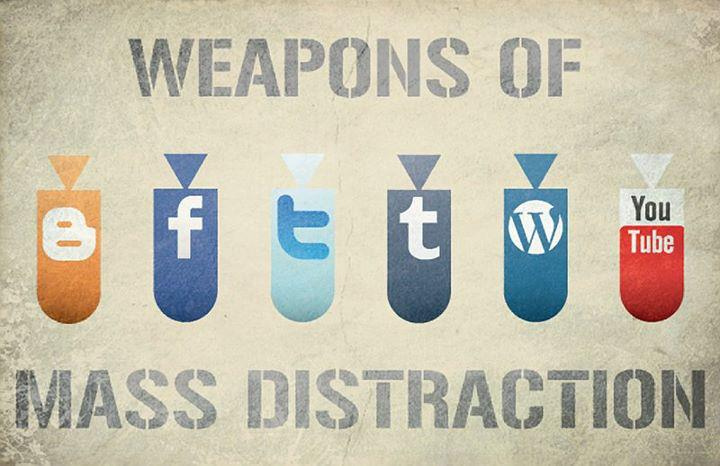As scientists reveal a shortening of the attention span and an increase of news consumption via social media platforms, new forms of content are developing to better suit our wandering minds.
Microsoft told us this March that our attention spans have dropped to a meager 8 seconds. This is less than a goldfish (reported to hold attention for 9 seconds). While the ability to multi-task has risen, our attention spans are flailing.
It’s an amazing feat you’ve managed to read this far.
Such impatience has led to developments in the way in which content, specifically news, is presented to the online audience, with major platforms looking to increase their readership.
According to Pew Research Center’s sample surveys, social media sites are becoming increasingly popular sources of news. In 2014 63% of users surveyed on both Facebook and Twitter claimed to use the sites as a mainstream source of news. In 2013 this was 52% on Facebook, and 47% on Twitter.
The study claims that Twitter, with 316 million active users, is the primary source for breaking news. Facebook, on the other hand, with 1.49 billion, is more frequently used to read opinion pieces, political content, and analytical articles.
Facebook reported that in 2014 its users shared 50 billion pieces of content from other apps; this is an average of three pieces per user, every month. As a result of this great opportunity to build user loyalty and interaction, popular social networking sites are adapting their offering to meet new consumer demands.
In May of this year, Facebook launched “Instant Articles,” which posts stories from major online publications. Users can now access content from sites, including The New York Times and Buzzfeed, without being redirected to the site of origin. Facebook’s “Instant Articles” are reportedly more likely to be shared – as they load faster, in under a second, which is 10 times quicker than previous redirects. It is currently only available on iOS while the feature will reach Android users later this year.
Just last month Twitter launched “Moments“ in direct competition with Facebook’s improved news offering. “Moments” is designed to make it easier to quickly browse the biggest stories, without having to actively seek these out from different accounts or hashtags. Top stories for the day are listed with the option for users to search through other areas of interest.
The social networking giants continue to battle it out for power over the online community, most recently with Facebook’s announcement of new app “Notify.“ Available for iPhone users in the US, the app pushes notifications to the user, alerting of new available content – very similar to Twitter push notifications.
The biggest players in the tech industry each have their own solution for the fast delivery of news to a global audience.
Apple’s News app allows “stories to be specially formatted to look and feel like articles taken from publisher’s websites while still living inside Apple’s app.”
Google has also risen to the challenge with its Accelerated Mobile Pages Project. Google claims our impatient minds frequently give up on slow loading pages. Like Twitter and Facebook, Google wants to embrace new rich media formats “like video, animations and graphics” to work alongside the ads, serving this content faster to mobile devices.
Critics worry that as more users continue to consume online content through these platforms, they will have increased controls over the selection of what people will have access to, potentially censoring some content.
The New York Times proposed that these developments, in fact, provide an opportunity for the news organizations themselves to step in and address the future evolution of news form and structure, as the big players push increased interest to news content delivered in various forms.
Content that is adapted for various contexts and accumulates as “particles,” allowing a “streamlined workflow and a lighter editorial load,” is the next stage of evolution according to the The New York Times.
Sociable spoke to industry expert Shailo Rao, founder of news messenger app Breaker, about the latest developments in this arena, and fears over information filtering.
“Content is king, but the ubiquity of mobile computing and the web’s social layer has made distraction-free, speedy news, that your friends are talking about the emperor,” reported Rao. In today’s dynamic world, Rao reminds us, access and relevancy are vital.
Regarding speculations over any sort of censorship, Rao encouraged us to remember that these filters have always existed in various forms.
“Today’s new s filters are digital channels like Twitter, Facebook, Yahoo! News, and SEO for Google. They largely control all the news that’s fit to scroll. The existence of a corporate filter is nothing new. Before mobile and the web, brick and mortar retailers and old media dictated news consumption and discussion with their newspaper and magazine placement.”
His comments in line with NYT predictions highlight these shifting powers, alongside a diversification in the variety of ways in which we consume news content.
The growing variety of forms includes the emergence of these “instant” formats, with varying length and content. Article length may vary from the one sentence news of the Apple Watch to the accumulating stories proposed by the NY Times.
Reportedly, 17% of readers will be lost when a page loads, in under four seconds. For an article of around this length, less than 28% will be read. Emerging forms of instant news exemplify adapted solutions as behaviors evolve. At some point we might also wish to address this issue of the wandering mind, as the fish continue to outdo us.












